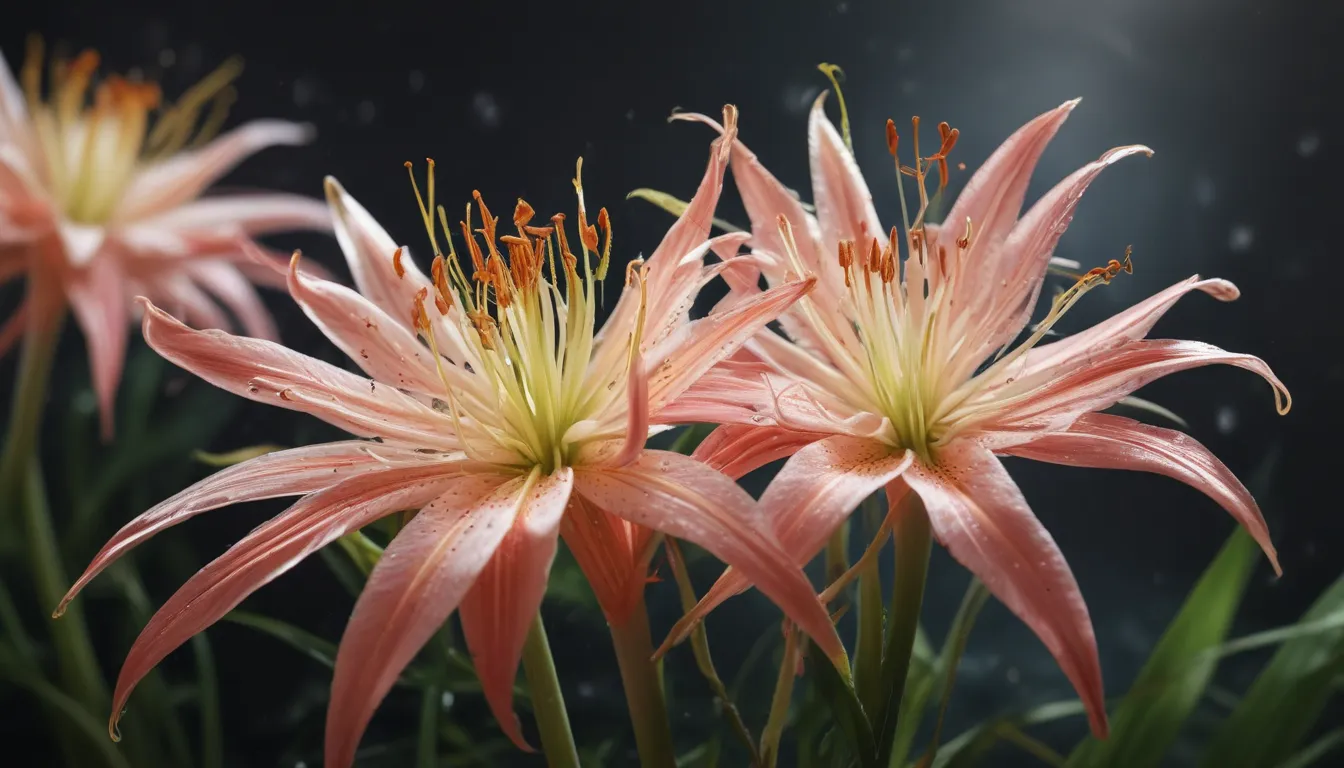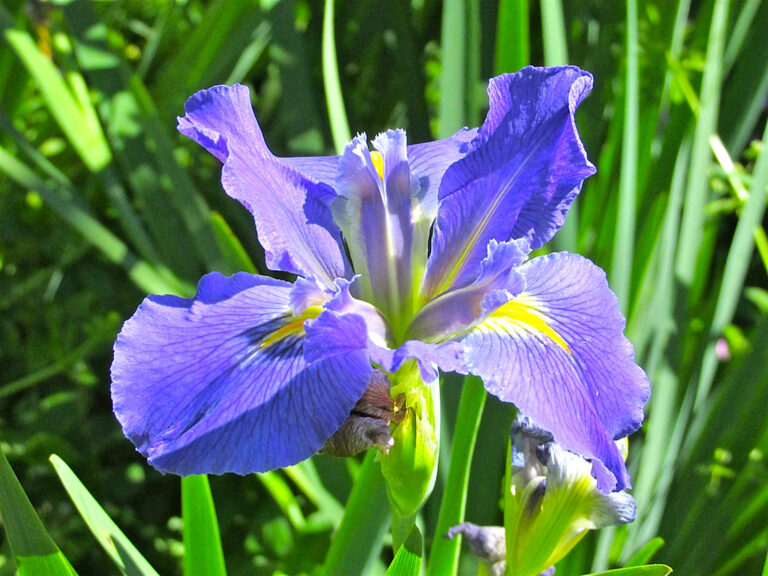The pictures we use in our articles might not show exactly what the words say. We choose these pictures to make you interested in reading more. The pictures work together with the words but don’t take their place. The words still tell you the important facts.
If you're drawn to the beauty of nature and crave a deeper understanding of the flora that surrounds us, spider lilies are sure to capture your attention. These unique plants, also known as Hymenocallis, belong to the Amaryllidaceae family and can be found in tropical and subtropical regions worldwide. Embracing their distinct charm and remarkable qualities, spider lilies continue to captivate botanists and plant enthusiasts, offering a glimpse into a world full of wonder and intrigue.
Exploring the Enigmatic Spider Lily
Unraveling the mysteries of spider lilies reveals a treasure trove of surprising facts that shed light on the hidden wonders of this captivating plant. Let's embark on a journey to discover 11 intriguing insights that will deepen your appreciation for these fascinating flowers.
1. Spider Lilies: Beyond True Lilies
Contrary to their name, spider lilies are not true lilies. Belonging to the Amaryllidaceae family, they share kinship with amaryllis and daffodils. Despite this botanical distinction, spider lilies boast unique flowers that captivate with their beauty and attract a diverse array of pollinators.
2. A Journey to the Americas
Native to the Americas, spider lilies have carved out their niche in tropical and subtropical regions. From the United States to Brazil and beyond, these resilient plants have adapted to a variety of climates, thriving in both moist and dry environments.
3. Marvel at the Flower Structures
The striking flower structures of spider lilies set them apart with their long, slender petals that curve backward, resembling spider legs. Available in a spectrum of colors, including white, yellow, and pink, these elegant blooms add a touch of vibrancy to any garden or floral arrangement.
4. Embrace Pollinators’ Delight
Spider lilies have evolved to attract pollinators such as bees and butterflies with their sweet-scented flowers. As these beneficial insects seek nectar, they inadvertently aid in the plant's reproduction by carrying pollen from flower to flower.
5. Propagation Through Bulbs
Propagation of spider lilies is commonly achieved through bulbs, allowing for the creation of new plants. Dividing bulbs during the dormant season ensures the health of roots and shoots, enabling gardeners to expand their collection or share these enchanting plants with others.
6. Cultural Significance in Asia
In Asian cultures, spider lilies hold symbolic meanings. In Japan, they are associated with death and often adorn graveyards, while in China, they symbolize good fortune and the dispelling of evil spirits. These cultural ties add depth to the allure of these captivating flowers.
7. The Resilience of Spider Lilies
Known for their resilience, spider lilies can adapt to diverse growing conditions, thriving in full sun or partial shade. Their ability to withstand drought and flourish in moist soils makes them a low-maintenance choice for gardeners seeking versatile plants.
8. Delight the Hummingbirds
Hummingbirds are drawn to the vibrant blooms of spider lilies, finding sustenance in their trumpet-shaped flowers and nectar-rich centers. By planting spider lilies, you can create a welcoming habitat for these agile and colorful creatures, enriching your garden with their presence.
9. Unveiling Medicinal Properties
Certain species of spider lilies have been traditionally used for their medicinal properties, believed to possess anti-inflammatory and antifungal qualities. Ongoing scientific research aims to uncover the full extent of their potential health benefits.
10. Enduring Perennials
Spider lilies are long-lived perennials, capable of blooming year after year with proper care and maintenance. Their enduring nature ensures a continuous source of beauty and color for your outdoor space, making them a valuable addition to any garden.
11. Exploring Diverse Varieties
With a range of varieties to choose from, spider lilies offer a multitude of options for gardeners. Whether it's the yellow blooms of Hymenocallis caribaea or the striking white flowers of Hymenocallis festalis, each variety showcases unique characteristics that enhance the visual appeal of any garden.
Conclusion: Embrace the Wonder of Spider Lilies
In conclusion, the allure of spider lilies lies in their captivating beauty and remarkable qualities. Whether you're drawn to their stunning appearance or intrigued by their cultural significance and medicinal properties, spider lilies offer a wealth of surprises waiting to be explored. By embracing these plants in your garden, you not only enhance its aesthetic appeal but also contribute to the balance of the ecosystem. So, take a moment to marvel at the wonder of spider lilies and discover the enchanting world they inhabit.
FAQs: Answering Your Curiosities
-
What are Spider Lilies?
Spider lilies, scientifically known as Lycoris, are perennial flowering plants native to various parts of Asia, distinguished by their elongated, spider-like petals. -
How do Spider Lilies get their name?
Spider lilies derive their name from the long, delicate petals that resemble spider legs, giving them a distinctive appearance in any garden or landscape. -
What is the significance of Spider Lilies in different cultures?
Spider lilies hold cultural significance across different regions, representing themes of death, good fortune, and reunion in various Asian cultures. -
Are Spider Lilies easy to grow?
Spider lilies are generally low-maintenance and thrive in well-draining soil with ample sunlight or partial shade, though they may take a few years to bloom. -
Do Spider Lilies have any medicinal properties?
Yes, some species of Spider Lilies are utilized in traditional Chinese medicine for their anti-inflammatory and antifungal properties, aiding in pain relief and promoting blood circulation. -
Can Spider Lilies be grown in containers?
Spider lilies are well-suited for container gardening due to their shallow root systems, requiring adequate sunlight, water, and well-draining soil for optimal growth. -
Are Spider Lilies toxic to pets?
Spider lilies are toxic to pets, particularly dogs and cats, as all parts of the plant contain toxins that may cause illness if ingested, necessitating caution in their placement. -
How long do Spider Lilies bloom?
Spider lilies typically bloom for one to two weeks, varying based on species, environmental conditions, and care practices that influence the duration of their flowering cycle. -
Can Spider Lilies be divided and propagated?
Yes, Spider Lilies can be divided and propagated during their dormant period in late summer or early autumn, ensuring successful growth and reproduction of these captivating plants. -
Do Spider Lilies attract pollinators?
Spider Lilies are known to attract pollinators such as bees, butterflies, and hummingbirds, offering a vibrant display of colors and fragrances that entice these beneficial creatures to aid in their reproduction. -
Are Spider Lilies suitable for all climates?
While adaptable to various climates, Spider Lilies thrive in temperate to subtropical conditions, ideally suited for USDA hardiness zones 7 to 10, though individual species may have distinct requirements that cater to specific environmental needs.
In your quest to unravel the mysteries of the botanical world, spider lilies offer a gateway to a realm of wonder and discovery. Their unique qualities, captivating beauty, and diverse characteristics invite you to explore, appreciate, and celebrate the marvels of nature that surround us. As you delve into the enchanting world of spider lilies, may you find inspiration and joy in the treasures they hold, enriching your connection to the natural world and nurturing your passion for plant exploration.






